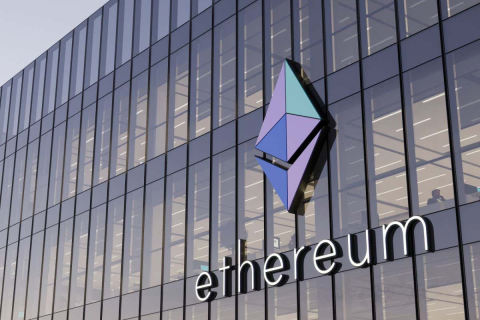Ethereum activity touches all-time High as fees decline
Ethereum's on-chain activity has surged to unprecedented levels in 2024, driven by a significant decrease in transaction fees following the Dencun upgrade. Data reveals that Ethereum's revenue, generated from transaction fees on its mainnet, has plummeted by 99% since March, marking one of the lowest revenue points in the blockchain’s history. Despite this revenue drop, the number of on-chain transactions has reached new heights, signaling strong demand and renewed interest in Ethereum's network. Analysts view these developments as a positive indicator for Ethereum and the broader decentralized finance (DeFi) ecosystem, particularly as Ether garners increasing attention from institutional investors.
Ethereum Revenue Declines by 99%
According to Token Terminal data, Ethereum’s revenue has experienced a sharp decline, dropping by 99% since March 2024. This revenue, which comes from fees for executing transactions on Ethereum’s mainnet, has hit one of the lowest levels in the blockchain’s history. The reduction in fees is largely attributed to the Dencun upgrade, which significantly altered Ethereum’s fee structure.
Dencun Upgrade: A Game-Changer for Ethereum’s Fee Structure
The Dencun upgrade, implemented in March, introduced technological advancements such as blobs and proto-danksharding. These updates have enabled layer-2 networks (L2s) to handle more data and transactions, effectively decongesting Ethereum’s main layer. As a result, the cost of sending transactions across Ethereum and its L2 networks has dropped dramatically, leading to reduced revenue but increased activity on the network.
Surge in On-Chain Activity Despite Lower Fees
Despite the drop in revenue, Ethereum's on-chain activity has surged. According to L2Beat analytics, on-chain swaps on Ethereum have reached new all-time highs in 2024. The reduction in fees has incentivized more users to engage with the Ethereum network, leading to higher transaction volumes. Before the Dencun upgrade, high gas fees were a significant barrier for many users, often rendering the network nearly unusable during periods of high activity.
Institutional Interest in Ether Grows
Ethereum's recent developments have also caught the attention of institutional investors. Following the debut of spot Bitcoin exchange-traded funds (ETFs) in January, the U.S. Securities and Exchange Commission approved similar ETFs backed by Ether in July. By the end of August, over $2 billion worth of spot Ether ETFs had been traded. This surge in institutional interest marks a significant milestone for Ethereum, as it continues to solidify its position as the second-largest blockchain after Bitcoin.
Long-Term Implications for Ethereum
While the immediate effects of reduced fees and increased on-chain activity are clear, the long-term impact of these developments remains to be seen. The introduction of spot ETH ETFs and the ongoing debate about their alignment with Ethereum’s ethos add another layer of complexity to the future of the blockchain. However, the current trajectory suggests that Ethereum is well-positioned for continued growth and innovation in the decentralized finance space.
What Can We Expect in Upcoming Episodes?
Increased Adoption of Layer-2 Solutions
As transaction fees continue to decrease, we can anticipate even greater adoption of Ethereum's L2 solutions, further driving on-chain activity and expanding the network's utility.
Rising Institutional Investments in Ether
With the approval of spot Ether ETFs, we may see a surge in institutional investments, potentially driving up the price of Ether and increasing its market dominance.
Debates on Ethereum’s Future Direction
The introduction of ETFs and the evolving fee structure may spark further debates within the Ethereum community about the network's future direction, particularly regarding its alignment with the original ethos of decentralization.
Ethereum's journey through 2024 has been marked by significant changes, and as these developments unfold, they will undoubtedly shape the future of the blockchain and its role in the global financial system.
